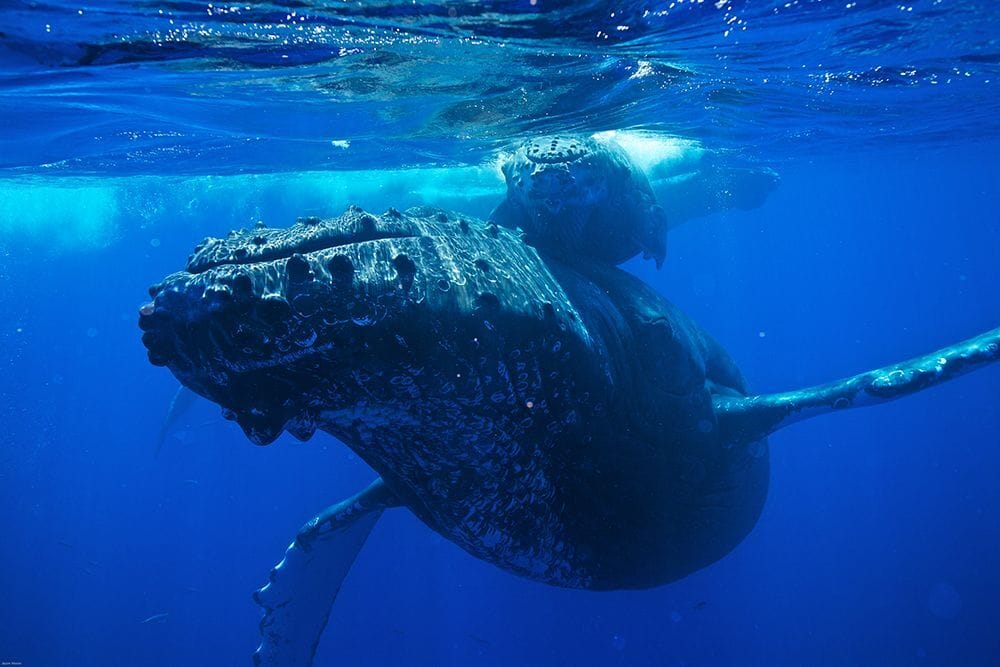
A mother humpback whale and her calf off the coast of Hawaii. The plight of the species was spotlight in Star Trek IV: The Voyage Home — a rare example of a science-fiction blockbuster that raised public concern for an environmental issue. Credit: NOAA
When Star Trek first aired in 1966, popular science fiction didn't take the science part too seriously. Alien abduction movies didn't get into the physics of how those tractor beams worked; biologists were rarely on hand to explain how, exactly, radiation exposure turned tiny insects into giant, hulking monsters. Star Trek has never exactly obsessed over realism either—but, long before being a geek was considered cool, the show was nakedly pro-science, casting scientific experts as heroic explorers who frequently use their technical know-how and superior reasoning to save the day. Teleporter technology and warp engines may be fanciful, but they show science's potential to bring about a better future. Star Trek isn't very scientific, but it is arguably science's biggest fictional cheerleader.
That helps explain why many so many Trek fans grew up to be scientists, why NASA named its first Space Shuttle Enterprise, and how actor Nichelle Nichols (Lieutenant Commander Uhura in Star Trek's Original Series) got a gig recruiting women and people of color to the space program. These are just a few of the fascinating intersections between science and Star Trek journalist Ryan Britt chronicles in his new book Phasers on Stun!, a deeply researched history of Star Trek and how it changed the world. From the inception of the Original Series to currently-airing shows like Strange New Worlds, Phasers on Stun! gives Trekkies of all generations a behind-the-scenes look at the making, and incessant remaking, of Star Trek through interviews with writers, actors, producers, fans, and more. If the book offers one simple takeaway about Trek, it's probably best summed up in the words of science fiction legend Octavia Butler: "The only lasting truth is Change."

Credit: Penguin Random House
That's as true for the franchise's relationship with science as it is for Spock's temperament or LGBTQ representation in Star Trek. The Science of Fiction spoke with Britt about the symbiosis between Star Trek and real-world science, the collision between NASA and Star Trek in the 1970s, and how Star Trek really did help save the whales. This conversation has been edited for length and clarity.
Join the Important Membership to read the rest.
Members get access to every essay from The Science of Fiction -- and everything else we make, too.
Start Your 30 Day Free TrialBenefits include:
- Your choice of our critically-acclaimed newsletters, essays, and podcasts
- A welcome sticker pack!
- Ad-free everything
- Your WCID profile: Track and favorite your actions while you connect with other Shit Givers
- Vibe Check: Our news homepage, curated daily just for you. Never doomscroll again
- Lifetime thanks for directly supporting our work


